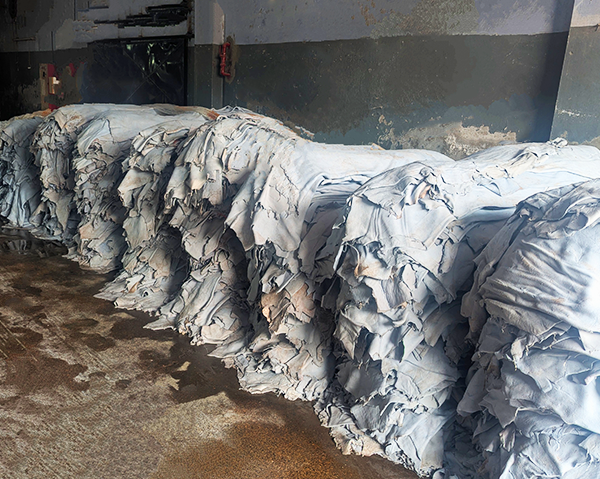“Wet Blue” Storage is one of the crucial post-tanning and post-grading stages in Iran’s leather industry, during which tanned and quality-sorted hides are stored and managed for future use or for distribution to the market. This stage ensures the preservation of the leather’s quality, flexibility, and structure, while also optimizing inventory management to meet the demands of different production lines as well as domestic and international markets.
After hides have been processed through chrome tanning and subsequently graded, they acquire a bluish tint from the chromium compounds, which is why they are referred to as wet blue. At this stage, hides are usually divided into four main categories (Grade 1 to Grade 4) based on surface quality, thickness, and uniformity:
- Grade 1: Premium leather intended for the production of luxury export items such as handmade bags, fine leather shoes, high-quality garments, and accessories.
- Grade 2 & Grade 3: Medium-quality leather suitable for the production of consumer goods, furniture, or automotive interiors.
- Grade 4: Lower-grade leather used for industrial products or applications where visual aesthetics are less critical.
To preserve quality and prevent bacterial growth or drying, wet blue hides are stored in controlled environments with regulated temperature and relative humidity. These conditions maintain the fiber structure and flexibility of the leather, keeping it ready for subsequent processes such as splitting, dyeing, or final finishing. Each hide is carefully labeled with grade and specifications and then organized on standard racks or pallets, allowing quick selection for customers or production lines upon request.
Hides that are categorized as Reject due to excessive defects or failure to meet commercial standards are not entirely discarded. Instead, they are usually sold at lower prices in local markets and are often used by small workshops, handicraft producers, or for low-cost products and experimental projects. This practice not only reduces waste but also helps recover part of the processing costs.
Key characteristics of “Wet Blue” storage in Iran’s leather industry:
- Storage of tanned hides based on grading (Grade 1 to 4)
- Maintenance in controlled environmental conditions to preserve quality and flexibility
- Precise labeling and categorization for fast and efficient inventory management
- Allocation of leather to different production lines depending on product requirements
- Sale of rejected hides in local markets to support small producers and reduce waste


No comments yet.